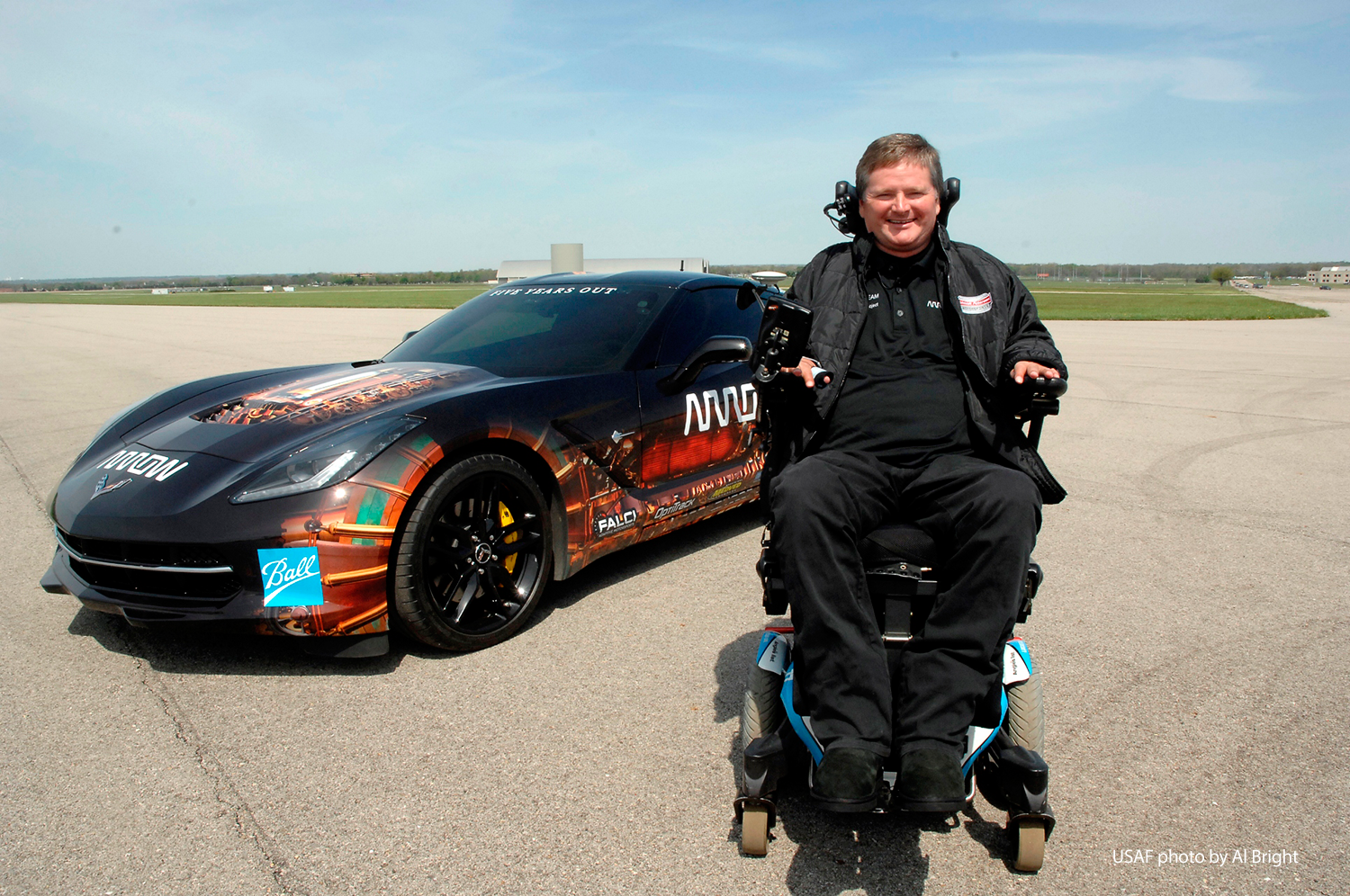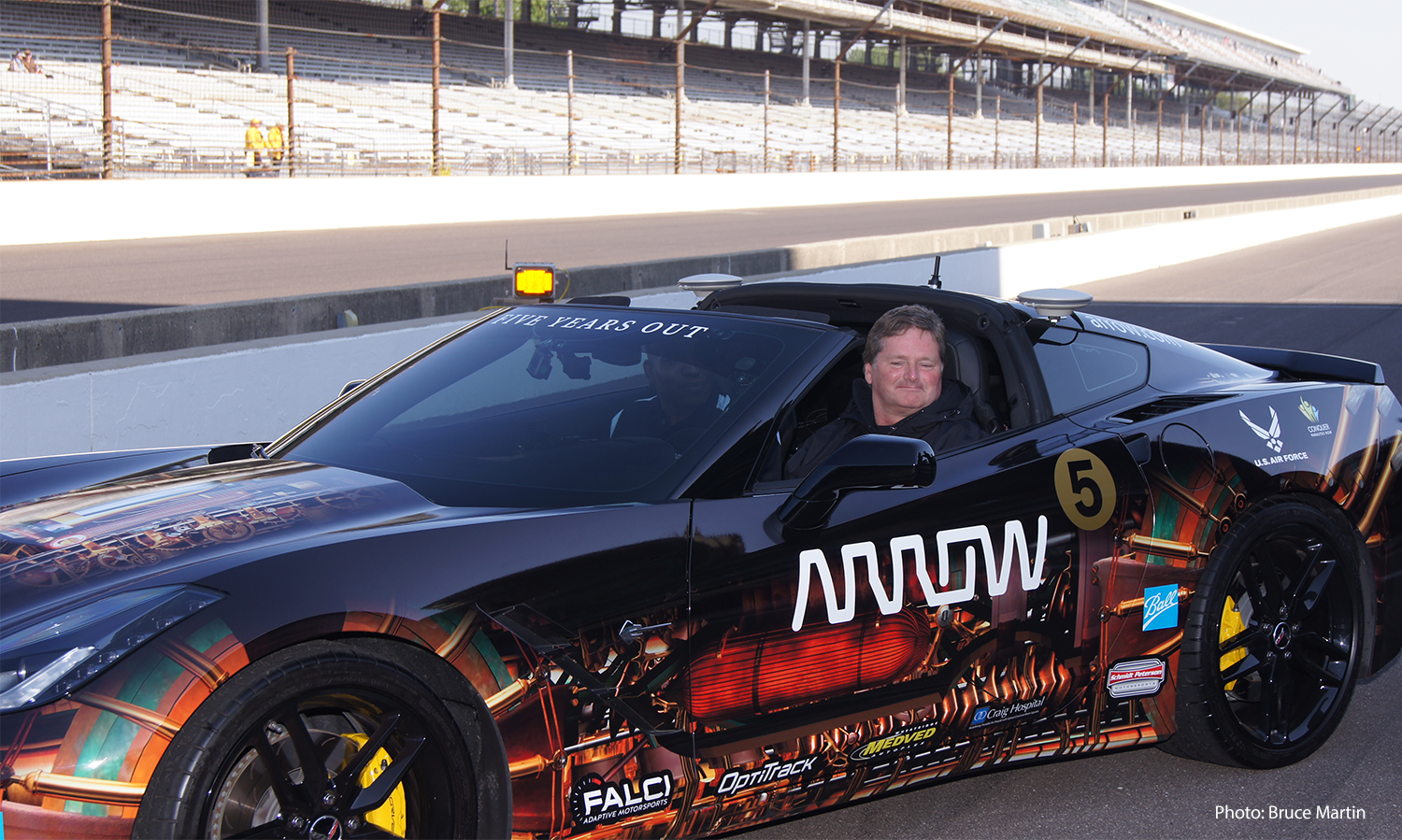One of the bonuses of CXC’s reputation is the number of requests from around the world to do special projects, whether for developing custom hardware, prototyping, or commissioning special use software. Most of these partnerships, with automobile manufacturers, race teams or private parties, must remain confidential, but occasionally, one can be celebrated publicly. Such is the case with a current project that involves Indy Lights and Indycar team owner Sam Schmidt.
Sam Schmidt was an up-and-coming Indy car driver with three starts in the Indianapolis 500. Not long after a win from the pole at Las Vegas Speedway, he suffered a near-fatal accident in off-season testing in January of 2000 that left him a quadriplegic, paralyzed from the neck down.
Unable to drive, Schmidt became an Indy Lights car owner, then an Indycar owner. His Indy Lights team holds the record for the most wins and championships in history and his Indy cars have won five victories against the powerful Penske, Ganassi and Andretti teams. But he still missed driving.
The answer was the SAM (Semi-Autonomous Motorcar) Project initiated by Arrow Electronics, a giant electronic component manufacturer headquartered in Centennial, Colorado. Arrow CEO Michael Long had been involved with a prominent rehabilitation hospital in Colorado and felt strongly about the idea of building a car for quadriplegics. Sam Schmidt was contacted and signed on to the project – with one major condition; he wanted to control and drive the car himself.
“He was adamant about that,” laughed Arrow applications engineer Will Pickard, “he had no interest in any kind of autonomous car. He didn’t want to be driven anywhere. He wanted to drive. So that was our goal, to use new technology to give him another way to get back behind the wheel.”
Initially working with Ball Aerospace & Technologies Corp., Falci Adaptive Motorsports, the Air Force Research Laboratory and Freescale Semiconductor, Arrow purchased a 2014 Corvette Stingray to Sam Schmidt’s specifications and set about modifying it with new control systems, including steering activated by head movements and registered by camera sensors.
Remarkably, on Pole Day at Indianapolis Motor Speedway in 2014, Schmidt was able to lap unassisted at the controls of the SAM Car. CXC founder and CEO Chris Considine witnessed the feat on television.
“We were absolutely blown away,” remembers Considine, “We knew of Sam Schmidt from racing, of course, but what he did that day was just mind blowing.”
Schmidt, Arrow and partner Freescale Semiconductors were already at work refining the systems for more accurate controls.
“We called it SAM 2.0.,” said Will Pickard, “Where the Pole Day car used a bite sensor, almost an on-off switch, 2.0 has a sip-and-puff breath system mounted just in front of the mouth for graduated control, like pedals give, and steering is done by turning rather than tipping the head, so you’re always looking where you’re going.”
Sam Schmidt was able to lap the 2.0-equipped SAM car at the twisty Long Beach Grand Prix circuit.
“A much more technical circuit, including the 180-degree turn 11 hairpin,” Pickard noted.
Two simulators had been used in developing the original system, but now, Arrow felt the need of more advanced simulation to develop and demonstrate the more sophisticated 2.0 technology, as well as a method for out-of-the-car training – not just for Sam Schmidt, but eventually others.
CXC doesn’t advertise, but is known worldwide for the Motion Pro II’s reputation for its extraordinary precision and accurate driving experience, and so it was in this case.
“Actually,’ says Picard, “a colleague who’d worked on the first SAM car system told us about CXC and I flew out to Los Angeles to meet Chris.”
“It was a natural for us,” says Chris Considine, “the challenge of interesting new technologies, the chance to work with very high-tech partners, and the fact that it concerned a kind of driver training, what we’re known for, we signed right on.
“And of course, to be involved in any way with Sam Schmidt in the early stages of something that could very well be so positive for others in the future is just an honor.”
The challenge for CXC was to integrate the highly-developed SAM 2.0 control systems – infrared motion-sensing cameras that read movement of the driver’s “hat” to steer, the breath-sensing “mouthpiece” to accelerate and brake, and the computers and sophisticated software that convert their output to car control actions – with CXC’s custom engineered hardware and software for the Motion Pro II simulator.
“One thing that was different for us,” says Considine, “we put a lot of thought into packaging our computers and some of the magic out of site on the Motion Pro II, integrating it within the chassis. Well, Arrow wanted all their technology, and their clients’ and partners’, the cameras, additional computers and special hardware, to be visible. And of course, it all had to talk to our systems transparently, almost like plug and play.
“But we worked with Will (Pickard) and got it done. And you know, every simulator is tested here before we deliver it. Our techs do system checks and then simulated races. Well, the SAM simulator, with its entirely different control system, was a real learning experience for them. But they really got into it and pretty soon were competing with each other, setting lap times around racecourses.”
Arrow had hoped to display their SAM 2.0 simulator at the Indycar race at Sonoma in August of 2015. Unfortunately, their order was behind some prior CXC commitments, but thanks to the “plug-and-play capability engineered in, the 2.0 modifications were able to be transferred to a rental Motion Pro II for that event.
“For that matter,” says Will Prickard, “we could take it off the Motion Pro II and fit it to the car right now. It’s exactly the same.”
Arrow received their own special Motion Pro II in early October. It will be on display at events in the coming months. And though none of the players, Arrow Electronics, Freescale Semiconductor, Sam Schmidt or CXC can say more now, development of the revolutionary SAM system is ongoing. Watch this space.


